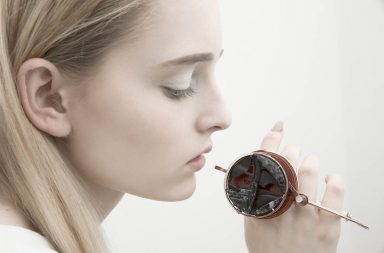When we think about fabric, our minds immediately turn from cotton to wool, from silk to polyester, from linen to neoprene, and not much more.
Notwithstanding, the fashion industry has always sought out new ways of surprising us, with the use of different fabrics and innovative techniques to produce clothes that are increasingly sophisticated and suited to the demands of a world that is more and more worried about the environment, the welfare of animals, and ethical working conditions.

Today at So Catchy! Where Fashion Begins, we ant to tell you about the arrival of Piñatex, a fabric made from the leaves of pineapples, a result of Carmen Hinojosa’s work. It comes in different styles, and can even be made to look like leather. A number of brands have expressed interest in the revolutionary material, like Puma or Camper. The designer Mayya Saliba’s work utilized Piñatex, which was shown recently at the Green Show Room at Berlin Fashion Week.

Piñatex is not only cruelty-free, it’s also a big step forward for the responsible fashion movement, along with respecting the rights of workers and contributing to a sustainable environment.
We’d be remiss to not mention recycled fabrics as well. One of the leaders in the field is the Spanish label, Ecoalf which recycles plastic bottles, fishing nets, coffee grounds, tires, cotton and post-industrial wool to produce clothing that respects the environment and takes advantage of materials that would otherwise end up in a landfill.

We found Erika Caldesi’s work particularly interesting (you can read her interview here), a clothing line made from a often overlooked, recycled material: plastic broom bristles.

But the future we’re still waiting for that will revolutionize the fashion industry is printing animal skins from epithelial cells in a laboratory. You might remember the first hamburger grown in a lab back in 2013, well that was just the beginning. The US start-up, Modern Meadow, a pioneer in biofabrication, is working to create skins from different animals in a laboratory, such as cows, goats, kangaroos or snakes. Their methods are not only cruelty-free, but they also contaminate much less that raising animals for the same use, which, according to the FAO, is responsible for 18% of all greenhouse gas emissions; specifically, 9% of all CO2 emissions, primarily through deforestation, 37% of methane emissions, principally from livestock digestion, and 65% of nitrogen dioxide, from manure. In fact, 2/3 of anthropogenic emissions of ammonium, which plays an important role in acid rain, are a direct result of raising livestock. With this in mind, we should soon see some practical applications of the new techniques in the fashion world.
The future of fashion is being written with each new day. Technology is joining forces with fashion for design and 3D printing, clothing is being used to defend freedom of expression, to start dialogue, or to support different lifestyles, as with agender fashion.

We worry much more about what we consume, we are aware of the importance of protecting our planet, and we are promoting ethical working conditions for the people who make our clothes.
It all began with the fashion revolution some years ago and with the idea that we can no longer take part in an industry that, at times, is cruel and gives no thought to the future.
Translation and layout by Michael Padilla




